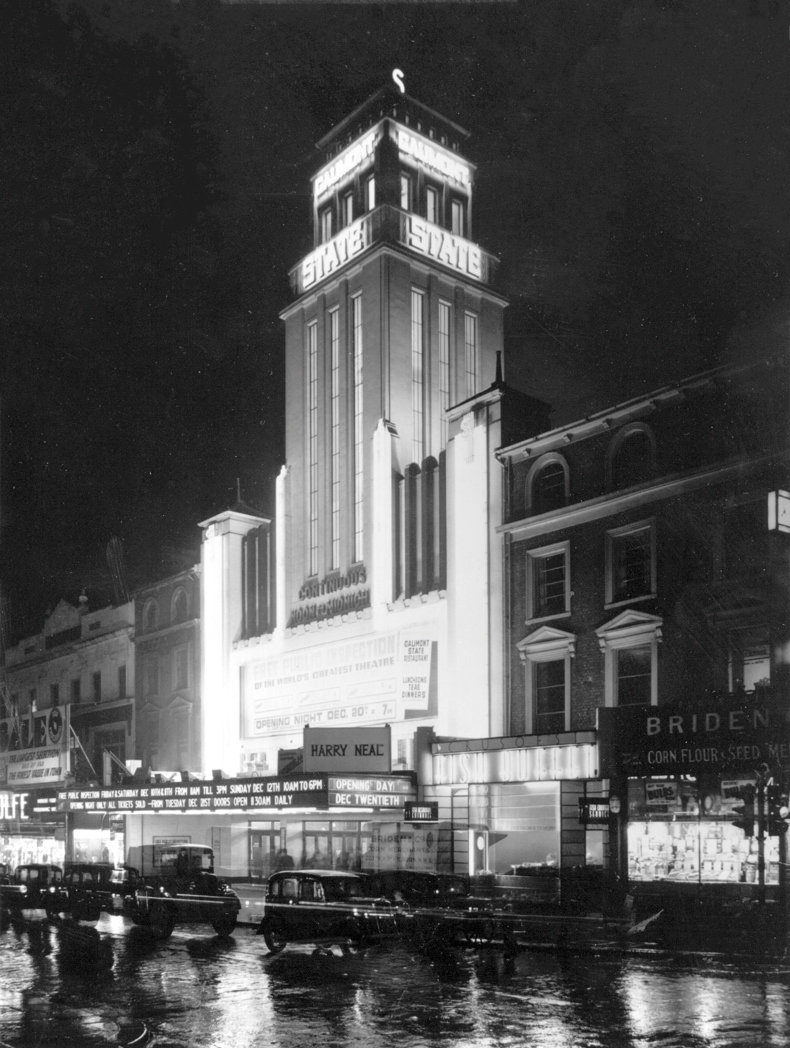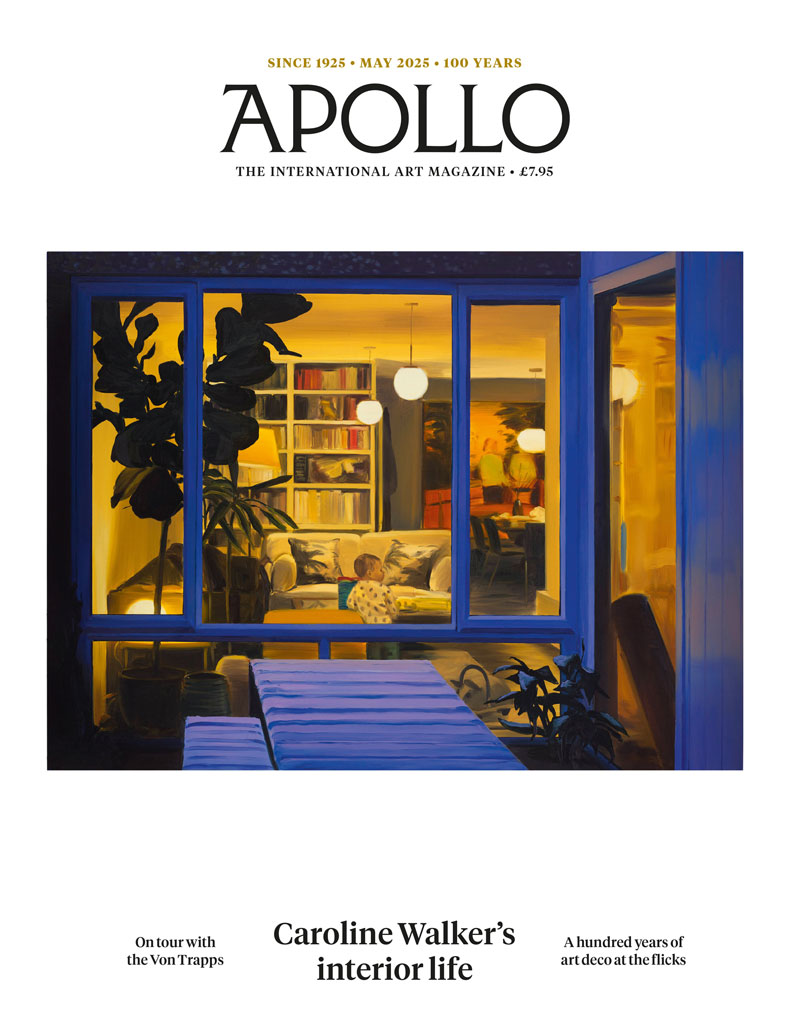From the May 2025 issue of Apollo. Preview and subscribe here.
At its essence art deco was, it can be argued, a way to translate the ideas of the modern movement for a mass audience – opulent rather than austere, commercial rather than conceptual, form following fashion as much as function. To those who might have considered the Bauhaus or Corbusier’s esprit moderne to be too harsh, too coldly intellectual, too (let’s face it) alien, it offered a more palatable alternative; diluted, to taste. Relations between the two camps were not entirely cordial, however. Walter Gropius blasted the ‘imitators who prostituted our fundamental precepts into modish trivialities’, while Nikolaus Pevsner lamented the influence of the 1925 Paris Exposition’s ‘in-exhaustible source of sham splendour’, with its ‘freakish angular details’, ‘sickening decoration’ and ‘infections of pseudo-cubism’.
Between the wars the purer strains of modernism largely failed to gain purchase in Britain, so its more decorative sibling came to epitomise the spirit of the Jazz Age. Since ordinary people were not generally to be found on transatlantic cruise ships or hanging out in the lobbies of grand hotels, their principal exposure to the aesthetic was the cinema. It was on the silver screen, in the geometric glamour of set designs for Astaire/Rogers musicals and screwball comedies, but crucially it surrounded the screen as well, in the form and decoration of the picture palaces. For British punters, flocking from Victorian terraces, boarding houses or Edwardian semis, these buildings embodied escapism in a strikingly contemporary form, as if an edifice from Fritz Lang’s Metropolis had suddenly arisen on the high street.
In the palatial tradition of earlier theatres, many deco-era cinemas pastiched exotic styles, such as the Tutankhamun-influenced grandeur of the Carlton in Islington or the Chinese pagoda that housed the Palace Cinema in Southall – both designed by the prolific cinema architect George Coles (1884–1963), the son of a confectionery shopkeeper from Leyton in east London. But the idea of the picture house as an essay in accessible modernity found its fullest flowering in the Odeon chain. Credulous cinemagoers were persuaded that this was an acronym for Oscar Deutsch Entertains Our Nation, after its entrepreneurial founder; unlikely, since the ancient Greeks used the same term 2,500 years earlier for a type of amphitheatre in which music was performed (albeit not on a Wurlitzer organ).
The first Odeon to bear the name opened in 1930 in Perry Barr, north of Birmingham, designed in a stuccoed Moorish style by the architects Stanley A. Griffiths and Horace G. Bradley. Over the next 11 years Deutsch opened 258 Odeons, 140 of which were newly built, and boasted that no two shared the same design. The cinemas he commissioned from Coles were especially notable for their sculptural, hyper-modern silhouette. Like the chain’s founder, they were far from shy and retiring; these were grandiose landmarks, yet also resolutely welcoming. No small feat, this, since the specific demands of the building (windows are, understandably, not a necessity) could, in less subtle hands, have resulted in forbidding Bastille-like bulwarks. Among Coles’s signatures was the use of cream faïence tiles on the frontage, humanising the monolithic structures while giving them an undoubtedly futuristic overtone.
Indeed, on the night the Odeon Bromley opened, in 1936, a showing was scheduled of the H.G. Wells adaptation Things to Come. In the end its premonitions of a forthcoming world war were deemed too downbeat for the occasion, and the audience was instead regaled by the antics of ‘cheeky chappie’ Max Miller in Educated Evans – a missed opportunity, since Alexander Korda’s future vision was perfectly suited to their surrounds. The Odeon Bromley’s elegantly curved facade, flanked by a pair of wing-shaped towers, would slot seamlessly into the deco minimalist world of Things to Come (bar the general absence, in Bromley, of men wearing shoulder-padded togas).
That sense of newness was key. The talkies were still an innovation, and cinema was a decidedly forward-looking, 20th-century form of entertainment. Coles’s buildings emphasised this by echoing other touchstones of modernity. The rounded lozenge of Isleworth Odeon, with its horizontal bands of neon lights, evoked the shape of a Bakelite radio; not entirely a coincidence, since both bore the hallmarks of streamline style, where aerodynamic features developed for steam trains and open-top roadsters were transferred to static objects. Similarly, the Rio Cinema in Sheerness was dominated by a geometric rotunda that resembled nothing so much as the rudder and outboard motor of a speedboat.
While Coles’s work could be found as far afield as Shrewsbury and Sheffield, the overwhelming majority of the 90 cinemas he designed were to be found in his home city. Dozens of his buildings were spread across the capital, each one individual and highly distinctive, Hawksmoor churches for the celluloid age. Many of them had their own versions of spires emerging from the cineplex and pointing blasphemously at heaven. The Odeon Balham, for example, was stepped like a Mayan temple to culminate in a narrow centurion-like crest, while its sister venue in Erith was crowned with a windswept stack of horizontal fins that would not seem out of place at an aerodrome. The most prominent example of all was in Coles’s State cinema for the rival Gaumont chain on the Kilburn High Road, its 120ft-high tower modelled on the namesake Empire State Building in Manhattan.

The Gaumont State cinema in Kilburn, London, photographed when it opened in December 1937 (the building is now run as a Pentecostal church). Photo: Evening Standard/Getty Images
Up in genteel Muswell Hill, the church situated directly opposite the Odeon would not stand for that sort of competition; after objections, the completed cinema was towerless but represented Coles at his most modernistic, its facade again clad in those cream faïence tiles. More significantly, the Grade II*-listed building – now run by Everyman – provides a rare opportunity to see Coles’s 1936 deco interiors in an age when 90 per cent of his cinemas have been demolished or closed. Here the elaborate auditorium reworks the principle of the proscenium arch, but gone are the swags, flourishes and great squadrons of putti found in Victorian theatres; instead streamlined parallels pull the viewers’ eyes towards the screen. The seats, meanwhile, are arranged in a gentle amphitheatrical curve – an elegant classical influence that even Oscar Deutsch would surely have acknowledged.
From the May 2025 issue of Apollo. Preview and subscribe here.















![Masterpiece [Re]discovery 2022. Photo: Ben Fisher Photography, courtesy of Masterpiece London](http://zephr.apollo-magazine.com/wp-content/uploads/2022/07/MPL2022_4263.jpg)
Suzanne Valadon’s shifting gaze